If blood will flow when flesh and steel are one
Drying in the color of the evening sun
Tomorrow's rain will wash the stains away
But something in our minds will always stay
Perhaps this final act was meant
To clinch a lifetimes' argument
[b][size=16]That nothing comes from violence[/size][/b]
[b][size=16]And nothing ever could[/size][/b]
For all those born beneath an angry star
Lest we forget how fragile we are
On and on the rain will fall
Like tears from a star, like tears from a star
On and on the rain will say
How fragile we are, how fragile we are
By Sting, 1987 (to listen, click [b]here or here[/b])
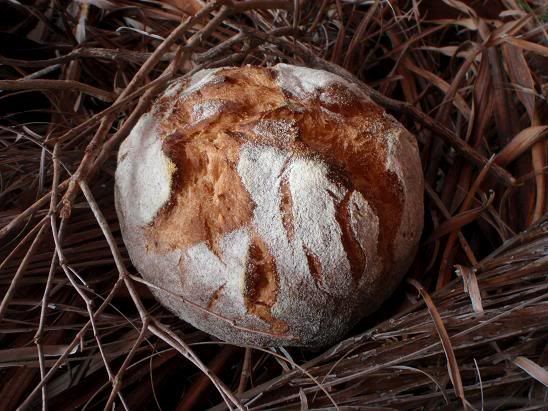
I rarely listen to the lyrics of a song, too hard for a person whose mother tongue is not the language of the song. The music is far more important to me than the lyrics. I can pick up the faintest instrument playing in the background and the inter-plays of instruments often exhilarate me. Sometimes when I am drunk in a piece of music, it feels like I am in the best medication ever afterwords.
And so it was in one of those blissful moments when, all of a sudden, the words "That nothing comes from violence, And nothing ever could" entered into my consciousness as clear as crystals. The music moved me and I wanted to turn this energy into something. No bread that I could make could match the delicate sensibilities that I felt in this song. But I have to get it out of my system.
This bread was my 6th attempt at this since my last post at TFL.
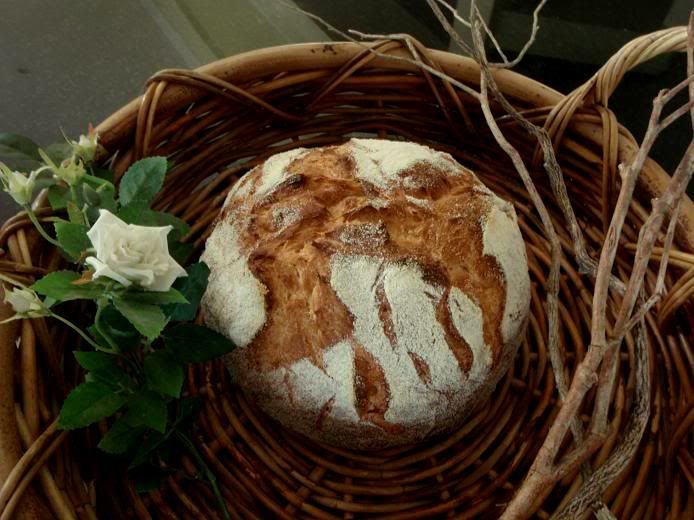

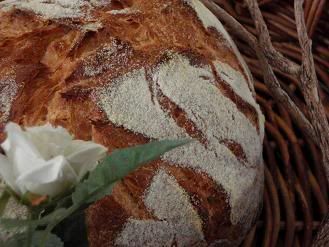
When I was deciding what style of bread that I wanted for Sting's [i]Fragile[/i], I remembered a picture that I saw nearly 6 months ago that caught my attention in Hamelman's [i]Bread[/i] - picture 21: Assorted Rye Bread from Chapter 6 (behind page 224). [b] Hansjoakim[/b], one of the perfectionists of the TFL bakers, did a beautiful job in this bread. He proofed the shaped dough in a brotform with the seam-side down and baked it with the seam-side up to allow the seams to open up in the oven. Something like that but [b]not[/b] exactly like that was what I was looking for. I wanted the seams to open up like a flower with deep fissures in even more dramatic ways.
[b]1st attempt: Pain au Levain with black sesame meal and buckwheat flour (overall hydration 68%)[/b]
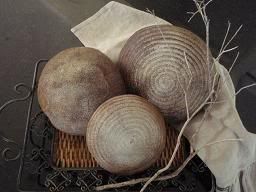

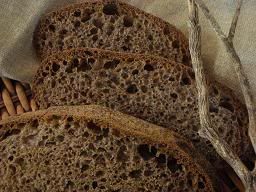
I initially wanted some black color in my bread so I used ground black sesame seeds and buckwheat flour which was the most "blackish" looking flour in my pantry. This was a failed attempt because other than proofing with seam side down and baking with seam side up, I did nothing different to what I normally do. The seams did not open at all.
The bread tasted nice. While the texture looked open, the bread felt heavy because of the black sesame meal. The effect of ground sesame seeds on bread is a bit like that of almond meal on a cake or quick breads.
[b]2nd attempt: Pain au Levain with buckwheat flour and teff flour (overall hydration 63%)[/b]
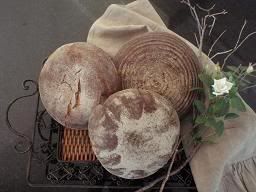
At this second attempt, I thought all that I needed to change was the dough hydration - it had not clicked on me that it is not the dough hydration but the way I shaped the final dough that matters in the final look. By accident, I got a few shallow fissures on the bread to the left in the picture above.
[b]3rd attempt: Pain au Levain with buckwheat flour (overall hydration 68%)[/b]
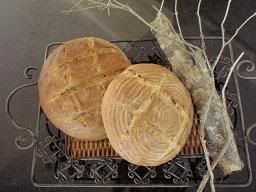


By this time, I knew that shaping was important for what I wanted to achieve. As rice flour can help prevent sticking, I used a mixture of rice and buckwheat flours on the work bench (when I was shaping) as well as on the brotform. This batch was divided into 3 pieces like the previous two batches. The first piece of the proofed dough showed small lines of seams before loading but the seams closed up in the oven. I knew that the other two pieces of dough would be the same; I was so mad that I slashed the other two doughs to bake.
[b]4th attempt: Pain au Levain.[/b] The result was still the same. I was too mad to take a photo of this bread. I tried baking without steaming, but the seams still did not open up. I did take a photo (below) of all the breads from the week's baking and I think of the "happy pigs" in San Francisco - the happy recipients of SFBI students' baking. Christmas is coming and I haven't done any festive baking. I have always loved the Italian panforte. I might try making a bread panforte.
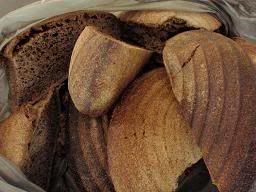
[b]5th attempt: Pain au Levain. [/b]

I was finally getting somewhere. (1) I shaped loosely with a lot of rice & buckwheat flour mixture on the bench; and (2) I proofed for only 30 minutes in the brotform so the shaped dough with its loose seams did not stay in that position for too long.
[b]6th attempt: a yeasted bread (600 g bread flour, 380 g water, 24 g olive oil, 20 g honey and 3 g instant yeast)[/b]
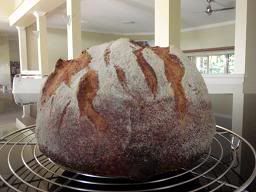
It was very late at night when something dawned on me - for the seams to tear open in the oven, I really shouldn't do a normal shaping. Following is what I have found for this shape of baking:
(a) Shaping: merely gather the edges to the centre without using your hands to tighten the boule against the work bench. In other words, the seams should not be sealed in any way. As well, the seams should be clearly definable after proofing and at time of loading.
(b) Proofing: as short as possible, 30 - 45 minutes, no more than 1 hour. It's best that the proofing basket be covered only loosely with a kitchen towel, not covered tightly in plastic bag. The dough should be able to air.
(b) Retarding: If the dough is to be retarded, retarding in bulk is better than at proofing stage. If the shaped dough goes through a long retardation, its seams may be closed up.
(c) Baking: the oven should be very hot to start with (ie, 250C / 480F). I do not know, however, whether or not steaming makes a difference.
I did take a crumb shot but forgot to download it before my daughter took my camera with her to her schoolie's holiday yesterday. I made her three batards for her schoolie's week to enjoy with her friends. I drove her to Gold Coast yesterday and she said I was an awesome mum. Well, what we do for our daughters! On the way home, I stopped by my most favourite bread shop in Gold Coast, Flour Bakery. I bought the two breads pictured in Jesse Downes' hands: Spelt Sourdough and Seeded Spelt Sourdough. I had the best coffee in Queensland there and ate my way through the bakery's other goodies. I was in heaven.

Shiao-Ping
- Shiao-Ping's Blog
- Log in or register to post comments
From the way you take inspiration for your breads from so many (other) arts, I wonder ... do you have synesthesia? (Do you ever experience music as color? Flavors as musical tones? etc.)
David
That's a big word for me. I don't know. But probably not. I just love music and colors; and that's all.
And now I have to scold you! So many bakers bring their frustrations here to TFL and you just kept quiet about yours! You would have found out very quickly about the shaping had you asked. Or did you and I missed it? One of the favorite flours for this open effect is rye flour. I like to think frisbee and then jelly fish, gathering the edges together to turn downward in the banneton while tightening the bottom (top).
I noticed also that you are using lots of gluten free flours, and they can like you said, weigh the dough down. I've been wondering if boiling some of them first, bringing out their starches might become a habit. I'm getting addicted to the technique.
Mini
... one after another? Next time I should shout when I have a problem, haha.
It's interesting you said that one of the favorite flours for the open effect is rye flour. Now, I do notice that Hansjoakim's seam-side-up breads were predominantly rye flour based. Rye is good for the open effect because it is a weak flour. (I have even seen shaped rye dough slashed to go into proofing.) This does not mean that to get an open effect, rye is the best flour for it though. Or does it?
Frisbee and jelly fish, that's a great analogy. I love it. So you think I should pat my dough as flat as a pancake? Would I not flatten out the seams too much?
Shiao-Ping
But some of these doughs look like frisbees before they are folded or shaped and tightened. Dusting, dusting with rye flour, the loaf doesn't have to be rye.
It might be fun to twist it too as it goes into the banneton.
Mini
Hi Mini,
Did I understand you right, does boiling low-gluten flour help to increase it's ability to bake light bread? That sounds very interesting!
Salome
(who's got a rye bread proofing and is thinking about shaping some boules with this technique. Below I added two pictures of potato bread which I had baked already two years ago, using a similar technique for shaping [oil/flour])
How did you do the bread on the right?
Shiao-Ping
p.s. When flour and water are under heat, the molecules in flour are destroyed and can absorb far more water than normal; this "dough" is then used to moisten the bread you are making.
It is indeed humbling to read her beautiful post
When I make something that does not work, I never try to repeat, learn from mistkaes, adjust. I abandon it and move to something else.
I see a New Year resolution shaping up...
its something I'm having fun with at the moment. Have to do more experiments.
Mini
Hi Mini, A while ago I looked into the "65C soupy dough" which is used to moisten bread dough. Is this what you meant?
I didn't quite understand your earlier comment when you mentioned about boiling gluten free flour. That was a separate point from trying to get the seams opening up, right?
I had to go back and read what soupy dough was about.
Ever so often, I run into a recipe where some of the ingredients are added to water and heated "boiled" just to a gel and this roux is cooled and then used in the dough. Most gluten free flours do contain starches, "boiled" starches gel, gel is lighter because it tends to trap CO2 gasses which should help dough rise.
When we put gluten free flour into the dough we have to be careful not to exceed a third of the flour weight and it is sometimes heavy and weighs the dough down. See where this is going? It only takes a few minutes to cook up the flour to do this and I've been experimenting... not a lot, but whenever it happens to come along. It's worth a try, just use some of the water and gluten free flour from the intended recipe.
Mini
In this case I should bake a buckwheat-apple bread soon again! I'll keep your advice in mind.
Salome
Hi Salome,
Mini suggests using some of the recipe water and gluten free flour to make up starches to add to your dough. I wonder with this buckwheat apple bread that you are going to make, if you just use part of the recipe flour (not necessarily gluten free) and water to make a starch, would it make your bread more moist, lighter, and better volume. Please let us know how you go. (You might want to reference [b]Dan Lepard's Barm Bread[/b].)
The next bread I'll bake will be with this technique. Sounds very interesting! Whether with buckwheat or not I can't tell yet, but I'll definitely give the boiling a try.Your link to the barm bread is very helpful.
Salome
Mini, you explained it so well. I finally understand why [b]Dan Lepard's Barm Bread[/b] is such a great formula. THANKS.
hey Mini and Shao-Ping,
I just shaped the breads, two with the frisbee-jellyfish-technique (well, I just brushed the downside with some oil, dipped it in flour, patted it out a little bit and pulled it together again, then turned it in my hands like you always do when you shape a boule, just this time the seam obviously didn't stick together as it was too floury. They are proofing now in floured baskets... I'm very curious! I'll share my results later.
Mini-Oven, please let me know about your results! Did I miss any earlier posts about this topic? Unfortunately I couldn't be very active here in the last couple weeks.
Salome
Hi!
The breads are out of the oven now! No crumb shot yet though, I apologize as well for the poor image quality (it's my cell phone cam). I like the way they look though.
Salome
Von Brote
Lovely photos and your breads look very nice. It's interesting that you used oil and flour to make the dough non-stick. Thank you.
Well, I don't exactly know why I used both. I just had this faint memory that I used oil to enhance the breaking-open in my earlier breads. But as I said, this was already a couple years ago and I never sucessfully copied my results since then. (I think I oiled the loaves of which I posted pictures earlier, by the way this is a potato-bread above. But I'm not exactly sure. )
After doing like I did I feared that I "over-did" it, because the flour stuck heavily to the dough and I was worried that there would be embeddings of unhydrated flour inside of the loaf. My room mate did cut into one of the round boules and as far as I can tell now, there aren't any. But the middle of the loaf isn't reached yet, so I'll post tomorrow when I make my sandwiches whether I found some flour "treasures" further inside of the loaf.
I think the next time I'll try it without the oil.
I really appreciate our "symbiosis" here! =)
Good night (I'm many hours ahead of your time...)
Salome
I just found the recipe I used for the bread you asked about!
That's how I did it:
1. shape round boule
2. pat it out (like a frisbee, just more oval)
3. roll the flat dough together (like for cinnamon rolls)
4. flour the last part of the dough heavily before you roll it up. watch out to include enough flour, you shouldn't seal it well.
5. press it somewhat together until it's like a boule again
well, that's how I did, it doesn't sound like the best method to me anylonger. but it's maybe helpful to you!
Salome
A method I learned from Norm (nbicomputers) to keep folds from fusing during proofing and baking is to dust between the folds with rye flour and proof with the smooth side of the loaf up (folds down).
Now, this was recommended for kaiser rolls, but I don't see why it would work for any bread where you want to bake with the folded surface up, and you want the folds to open up during baking.
David
Interesting.... they don't "glue" again even if all the weight of the dough is pushing the folds down? I guess the rye flour would prevent that from happening
I will definitely try this on my next loaf... too bad I did not know about it a couple of days ago when I put a Vermont sourdough to proof overnight... OH, well - there's always next time, next bread.....
What works for others may not work fool-proof for me. I still think there are other factors that must be aligned....
It appears that there are many ways to achieve the same purpose.
Sometimes you get an idea in your head that can't be adequately expressed. But you certainly gave it your all. Thank you for sharing such a personal moment.
Eric
the outcome is far from one of my favouite. Sigh. Sometimes it is best not to try too hard. It is best to let go.
Shiao-Ping